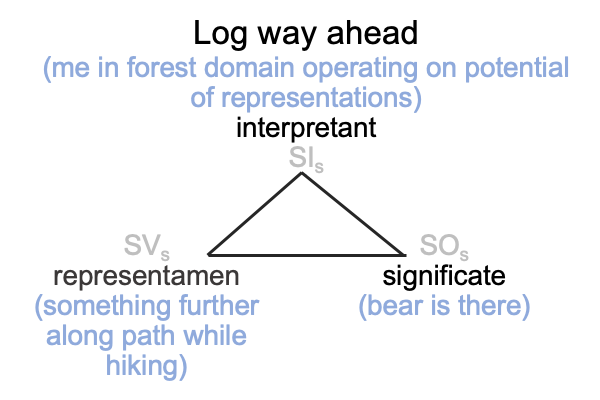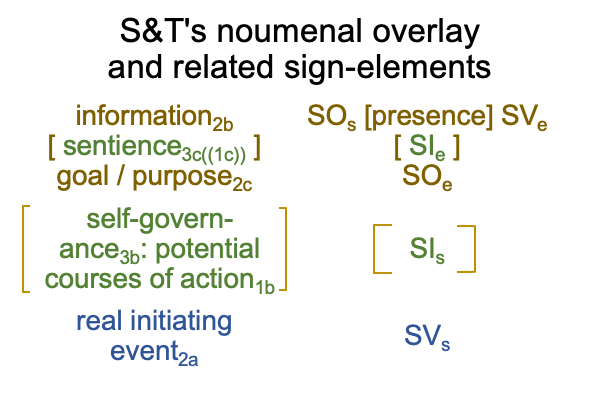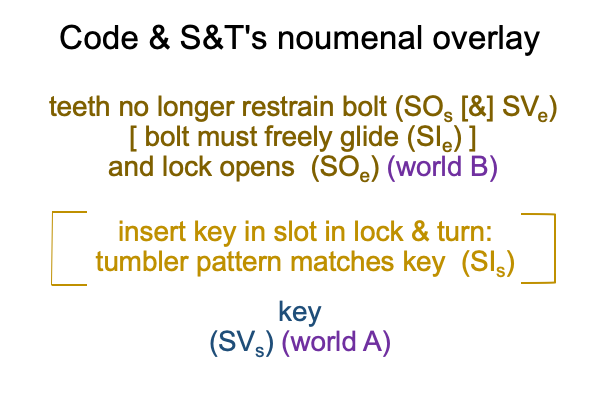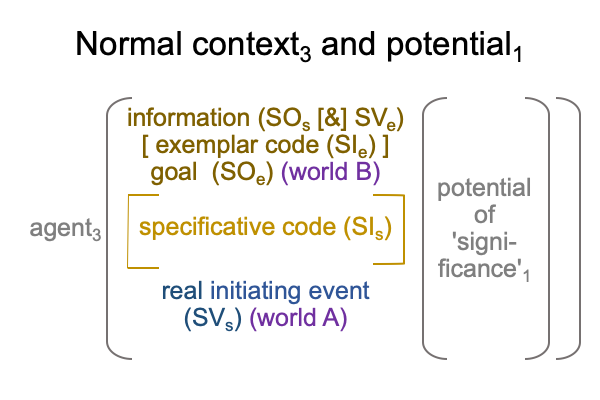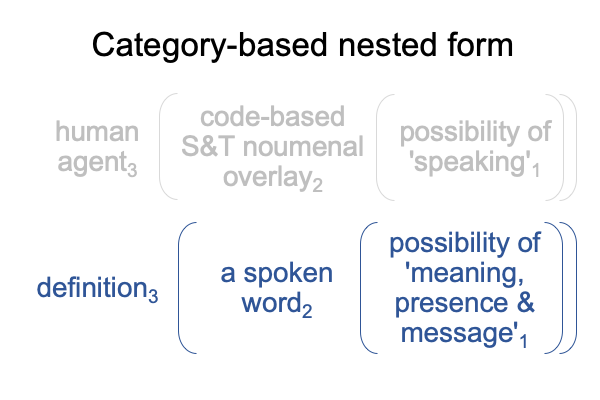Looking at Hongbing Yu’s Chapter (2024) “…Danger Modeling…” (Part 3 of 7)
0773 Section 17.2 addresses the question, “Is it possible to couple concepts of modeling with semiotics?”
The answer is yes and now I am going to repeat myself.
Indeed, Sebeok and Danesi demonstrated one coupling. The model participates as a sign-vehicle in the appearance of a sign-relation. The model is a form (SVapp) that stands for the matter at hand (SOapp) in regards to a referential domain(SIapp).
The sign-relation is in appearance because there does not seem to be any categorical changes. All the elements appear on the same categorical level.
0774 In what follows, I assign all the elements to the situation-level of an interscope. The elements retain the appearance of a sign-relation. At the same time, the elements correspond to features in a category-based nested form.
Domain3 becomes the normal context. The qualifiers, “representational” and “referential”, enter the realm of potential1. Then, the two real elements in Peirce’s secondness, matter at hand2 and form/model2, are arranged in actuality2, along the lines of Aristotle’s hylomorphe, matter [substance] form2. The actuality2 becomes the matter at hand [makes present] the form or model2.
0775 Section 17.3 addresses the question, “Can the inquirer characterize the coupling?”
The answer is yes.
Or, I should say, “This examiner’s answer is yes, as shown in the following comparison.”

Both category-based nested forms occur in the situation level.
0776 One aspect of the apparent sign-relation associates to the specifying sign.
0777 The sign interpretant for Sebeok and Danesi’s approach (SIapp) says, “The situation-level normal context of domain3b operates on the possibilities inherent in reference and representation1b.”
This compares to the specifying sign-interpretant in semiotic agency. The normal context of self-governance3b operates on potential courses of action1b.
0778 What about the apparent sign-vehicle and sign-object for Sebeok and Danesi’s approach (SOapp [makes present] SVapp).
The author suggests that the coupling is like a gestalt. A gestalt is a spontaneous recognition. Often, something in background becomes foreground in a gestalt shift. For the example of log down the trail (SVs) [specifying] a bear(SOs), a gestalt moment transits from something that may be blocking the path further along (SOs) to what if that something is a bear (SVe).
0779 SOapp [makes present] SVapp seems to be a two-way street.
The author’s suggestion changes the character of information2b from {SOs [&] SVe} to {SOs [presence] SVe]. [Presence] is the contiguity between the specifying sign-object (SOs) and the exemplar sign-vehicle (SVe). The contiguity entails a gestalt moment.
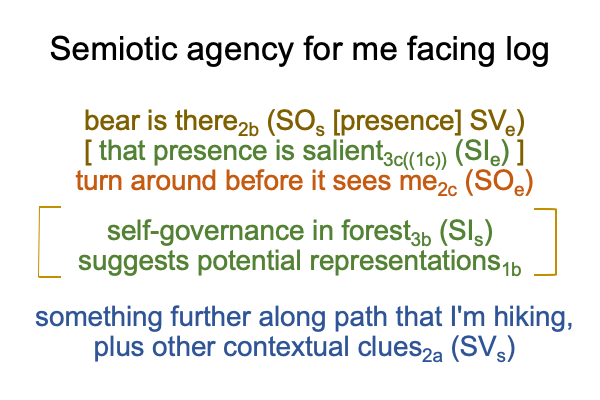
0780 Have I learned something new about the S&T noumenal overlay?
In section 17.3, the author offers a diagram that pictures the model of semiosis that he has in mind. Here is a reproduction. The three dimensions correspond to three corners of a triangle.
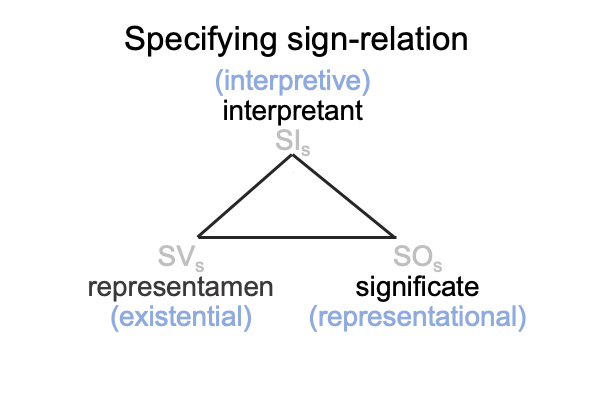
0781 While this diagram may seem far less sophisticated than the pictures of semiotic agency developed in this examination, there will be a lesson to learn.
How so?
Sharov and Tonnessen’s noumenal overlay acts like an amoeba, it engulfs whatever it can devour.
0782 So, let me look at how the S&T overlay embraces this depiction of a model and semiosis with its pseudopods.

